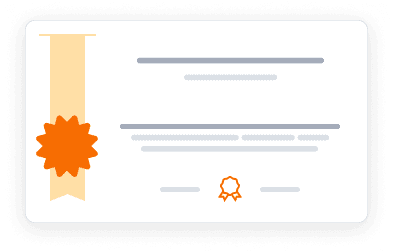Master the essential materials and tools for rapid prototyping, covering everything from basic materials to advanced CNC machines, ideal for aspiring engineers
Master the essential materials and tools for rapid prototyping, covering everything from basic materials to advanced CNC machines, ideal for aspiring engineers
This course cannot be purchased separately - to access the complete learning experience, graded assignments, and earn certificates, you'll need to enroll in the full Rapid Prototyping and Tooling Specialization program. You can audit this specific course for free to explore the content, which includes access to course materials and lectures. This allows you to learn at your own pace without any financial commitment.
5
(12 ratings)
1,707 already enrolled
Instructors:
English
ଓଡ଼ିଆ
What you'll learn
Understand material properties and selection criteria
Master traditional machining tools and techniques
Learn advanced CNC machining processes
Gain expertise in 3D printing and laser cutting
Develop skills in prototype manufacturing methods
Skills you'll gain
This course includes:
0.7 Hours PreRecorded video
7 quizzes
Access on Mobile, Tablet, Desktop
FullTime access
Shareable certificate
Get a Completion Certificate
Share your certificate with prospective employers and your professional network on LinkedIn.
Created by
Provided by

Top companies offer this course to their employees
Top companies provide this course to enhance their employees' skills, ensuring they excel in handling complex projects and drive organizational success.





There are 4 modules in this course
This comprehensive course explores the fundamentals of rapid prototyping materials and tooling methods. Students learn about various materials including cardboard, plastic, wood, and aluminum, understanding their properties and appropriate applications. The curriculum covers traditional machining techniques, advanced CNC machinery, 3D printing, and laser cutting. Through practical examples and hands-on exercises, students gain expertise in selecting the right materials and tools for different prototyping scenarios.
Course Introduction
Module 1 · 15 Minutes to complete
Rapid Prototyping Materials
Module 2 · 41 Minutes to complete
Traditional Machining
Module 3 · 23 Minutes to complete
CNC Machining
Module 4 · 3 Hours to complete
Fee Structure
Instructor
Assistant Teaching Professor at Arizona State University
Dr. Daniel Frank is an Assistant Teaching Professor at Arizona State University's Polytechnic campus, specializing in mechanical engineering. He earned his Ph.D. in Mechanical Engineering from the University of Florida, where he also completed his master's degree. During his graduate studies, he played a significant role in helping his university's robotics teams win two international autonomous boat competitions. Since 2012, he has been actively mentoring high school FIRST Robotics teams, focusing on teaching students about robotics and introducing them to assistive technology projects. His commitment to demonstrating how engineering skills can improve lives aims to inspire more students to pursue careers in engineering.In addition to his mentoring efforts, Dr. Frank has dedicated over a decade to promoting engineering education within Native American communities, including the Navajo Nation. He volunteers with the Si Se Puede Foundation, mentoring both a high school FIRST Robotics team and an all-women collegiate robotics team, Desert WAVE. His teaching interests include exploring how alternative reality games can enhance student engagement in the classroom. Dr. Frank teaches several courses on Coursera, including "Adding Electronics to Rapid Prototypes," "Rapid Prototyping Materials and Tooling," and "Using Rapid Prototyping in the Engineering Design Process." Through his educational initiatives and community involvement, he continues to foster interest in engineering among diverse student populations.
Testimonials
Testimonials and success stories are a testament to the quality of this program and its impact on your career and learning journey. Be the first to help others make an informed decision by sharing your review of the course.
Frequently asked questions
Below are some of the most commonly asked questions about this course. We aim to provide clear and concise answers to help you better understand the course content, structure, and any other relevant information. If you have any additional questions or if your question is not listed here, please don't hesitate to reach out to our support team for further assistance.

